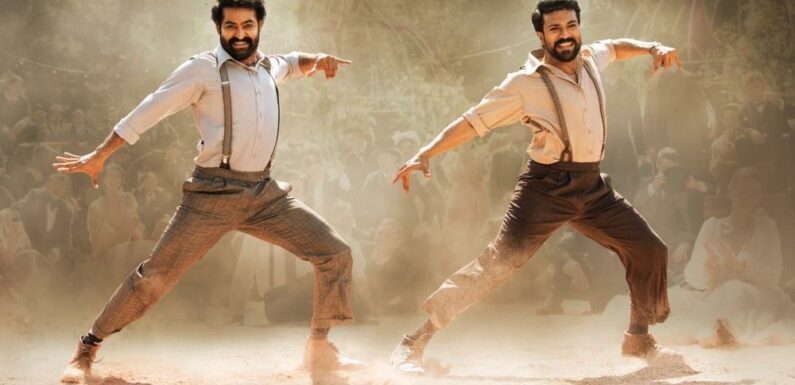
Before there was “RRR,” director S.S. Rajamouli had box-office smashes like the two-part “Baahubali,” which proved how adept he is at making hits. But among Indian audiences, there is a deep divide between those who applaud that the rest of the world is waking up to his brilliance and those who are horrified that a “dubba” — or hollow film — is being lauded.
I’ve heard it from my own Indian friends and relatives who have been reaching out to ask: what are they missing? Reports of viewers dancing at Hollywood’s iconic Chinese Theater to the Oscar-nominated song “Naatu Naatu” horrify these purists. But if you embrace what Rajamouli is doing, “Naatu Naatu” — which is not really the best song in Indian or Telegu films, or even in “RRR” — has somehow captured the zeitgeist, just as the film itself has.
“Naatu Naatu” comes from the realm of “Tollywood,” i.e. Telegu cinema, a regional cousin to Bollywood, Hindi cinema from Mumbai, previously called Bombay. Interestingly, Western audiences are waking to “Naatu Naatu” just as Bollywood has retreated from having such numbers in films. That movement peaked around the time that worldwide audiences became more aware of Bollywood musicals via 2008’s “Slumdog Millionaire.” A.R. Rahman and Gulzar, both known on known on the Indian national stage, won the original song Oscar for “Jai Ho,” and even though “Slumdog” was a British production, many of Indian descent were proud of the film.
Even 10 years ago, there was a banger at the end of 2013’s “Chennai Express” called “The Lungi Dance” that became a national hit. The few numbers that have been produced since are forgettable. Bollywood films themselves have not drawn audiences the way they used to, while regional movies — including Telegu pics — have stepped into the breach.
Telegu has provided some cinematic gems throughout history, films that the rest of the country admired so much that other regions and even Bollywood copied the songs and films. (Don’t be appalled: the imitation is considered a form of flattery, as only the good films get copied.) Going back some 40 years, there was “Sankarabharanam,” whose lead was a non-pro, and the film was laden with some genuinely moving moments and songs. There have alternatively been songs with lyrics such as “omelette kaavala, vodu gassu” (loosely translated to: Will you eat an omelette? No, it gives me gas).
The lyrics for “Naatu Naatu,” which means “Dance Dance,” are also amusing, exhorting people to “Dance like a green chili / Dance like a sharp dagger / Like a beating drum that makes your heart beat faster…”
To its fans in India, the fact that a regional film, from a state that lacks the cachet of Satyajit Ray, is a smash not only in Hollywood but also around the world — setting records in Japan, for example — is a source of pride.
Those who understand the language love the attention “RRR” is receiving. With regional films upping production values, whether via cinematography
or choreography, it’s not surprising Indian films are attracting international attention. As for “Naatu Naatu,” perhaps it’s just a touch exotic when the dance sequence itself was filmed in Kiev, Ukraine, before the war broke out, and the two personable leads are wearing not sarongs but regular western outfits.
Indians may have a variety of responses to “RRR,” but its signature song’s international success could bring the pendulum back to musicals. It is inevitably breeding copies, at least: The latest Shah Rukh Khan hit, “Pathaan,” has fans dancing in the aisles during the song “Jhoom jo Pathaan.”
Read More About:
Source: Read Full Article